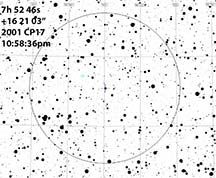
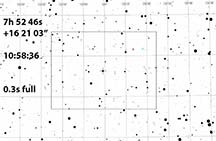
This is a bright event, but only 9 degrees from the full moon. Still, from experience, should be do-able at 2x. The duration is only 0.3s so you cannot go more than 2x and have decent hope of detecting the event. Goes through Santa Cruz, centerline near the cemetary (hmmm. a sign?). Karl did not try, not in the path. Kirk said he'd go up to "the Berm".
 |
 |
I set up at the cemetery up Ocean St extension. 35 ft south SE of the light pole, on the west side of the road. The light pole is just SE of cemetary entrance. At 2x, the target was easy to follow on the monitor. No event obvious live, but perhaps on playback there'll be something very short? I used 2x integration, sharpness=4, gain=41, Gamma=1.0, and both horizontal and vertical median filtering. I've convinced that for all Watec cameras, we should always use horizontal and vertical median filtering, as a good substitute for a full on flat fielding, which is not available in PyMovie. There's clear banding, even if subtle on some units, due to lack of perfect uniformity in the individual pixel columns' amplifiers in Watec cameras.
Alas, no. I see no evidence of an event. A full event would be 8 points near zero. In fact, below we see none. I will report a "Miss" for this one, which is also what Kirk saw. Odds were high we'd have a "hit", but this again testifies to the overestimated accuracy of these small, newer asteroids' orbits.
I'm filing a "miss" report. So did Kirk.
06:56:32 start, 07:00:27 end tape
122 01 40.47" 36 59 24.23" 21m
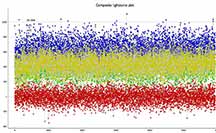 |
 |
 |
Looks like a miss for 2001 CP17, no apparent event, Jan 13. 2x at the Berm, it was 9 degrees from a full moon. Predicted max duration was 0.28 sec, OW cloud said 6.2m drop for target, but with nearby stars 2.8m. PyOTE detectability tool reported: An event of duration 0.150 seconds with magDrop: 2.8 is likely detectable. So a miss or too short to detect.
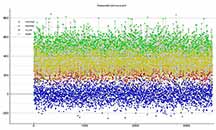 |
 |
 |
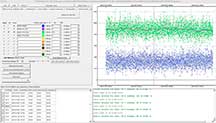 |
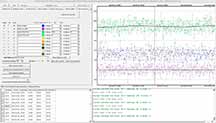 |